Xingtai Gui
FipTR: A Simple yet Effective Transformer Framework for Future Instance Prediction in Autonomous Driving
Apr 19, 2024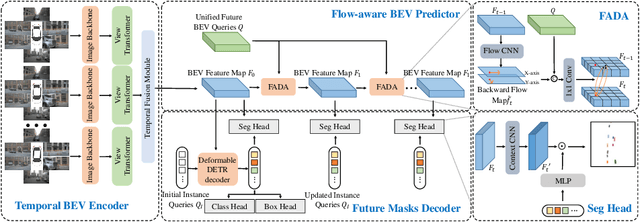
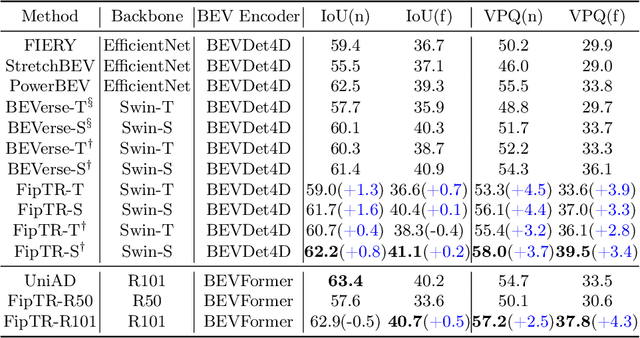
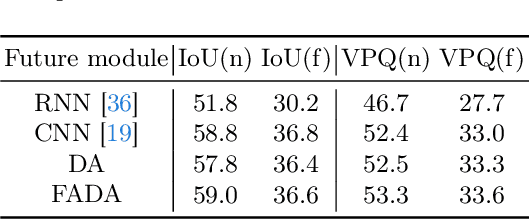

Abstract:The future instance prediction from a Bird's Eye View(BEV) perspective is a vital component in autonomous driving, which involves future instance segmentation and instance motion prediction. Existing methods usually rely on a redundant and complex pipeline which requires multiple auxiliary outputs and post-processing procedures. Moreover, estimated errors on each of the auxiliary predictions will lead to degradation of the prediction performance. In this paper, we propose a simple yet effective fully end-to-end framework named Future Instance Prediction Transformer(FipTR), which views the task as BEV instance segmentation and prediction for future frames. We propose to adopt instance queries representing specific traffic participants to directly estimate the corresponding future occupied masks, and thus get rid of complex post-processing procedures. Besides, we devise a flow-aware BEV predictor for future BEV feature prediction composed of a flow-aware deformable attention that takes backward flow guiding the offset sampling. A novel future instance matching strategy is also proposed to further improve the temporal coherence. Extensive experiments demonstrate the superiority of FipTR and its effectiveness under different temporal BEV encoders.
Cluster-aware Contrastive Learning for Unsupervised Out-of-distribution Detection
Feb 06, 2023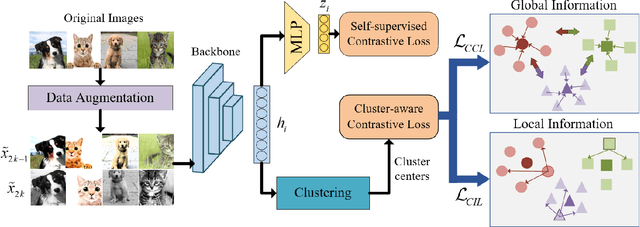


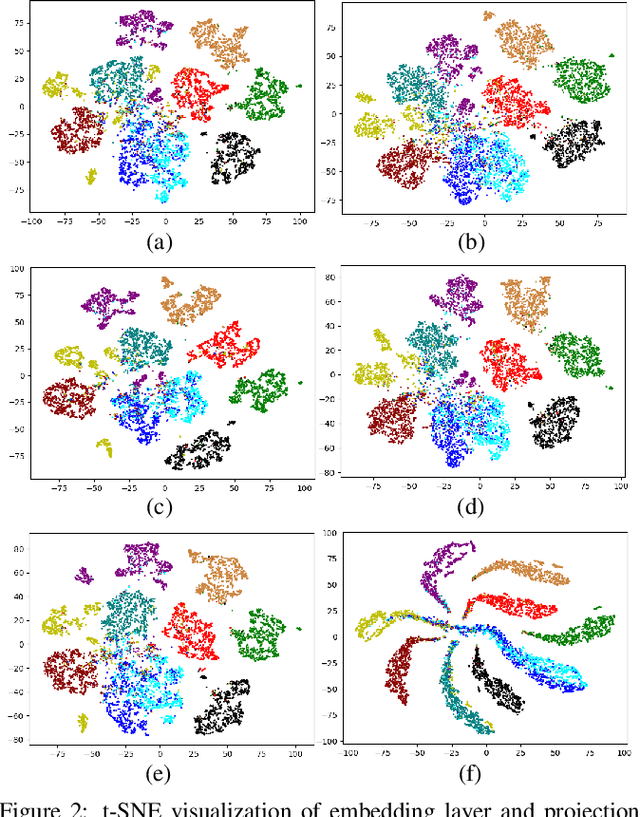
Abstract:Unsupervised out-of-distribution (OOD) Detection aims to separate the samples falling outside the distribution of training data without label information. Among numerous branches, contrastive learning has shown its excellent capability of learning discriminative representation in OOD detection. However, for its limited vision, merely focusing on instance-level relationship between augmented samples, it lacks attention to the relationship between samples with same semantics. Based on the classic contrastive learning, we propose Cluster-aware Contrastive Learning (CCL) framework for unsupervised OOD detection, which considers both instance-level and semantic-level information. Specifically, we study a cooperation strategy of clustering and contrastive learning to effectively extract the latent semantics and design a cluster-aware contrastive loss function to enhance OOD discriminative ability. The loss function can simultaneously pay attention to the global and local relationships by treating both the cluster centers and the samples belonging to the same cluster as positive samples. We conducted sufficient experiments to verify the effectiveness of our framework and the model achieves significant improvement on various image benchmarks.
Simple Adaptive Projection with Pretrained Features for Anomaly Detection
Dec 05, 2021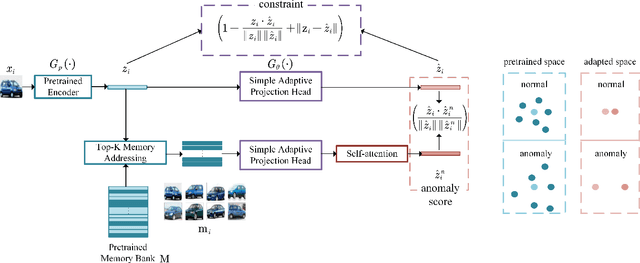

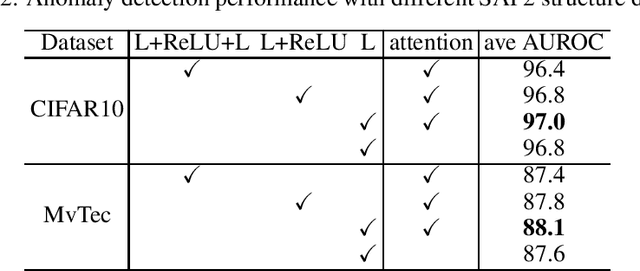
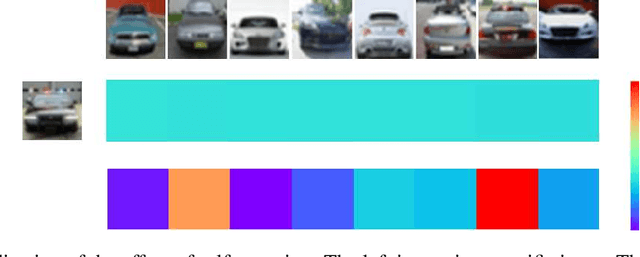
Abstract:Deep anomaly detection aims to separate anomaly from normal samples with high-quality representations. Pretrained features bring effective representation and promising anomaly detection performance. However, with one-class training data, adapting the pretrained features is a thorny problem. Specifically, the existing optimization objectives with global target often lead to pattern collapse, i.e. all inputs are mapped to the same. In this paper, we propose a novel adaptation framework including simple linear transformation and self-attention. Such adaptation is applied on a specific input, and its k nearest representations of normal samples in pretrained feature space and the inner-relationship between similar one-class semantic features are mined. Furthermore, based on such framework, we propose an effective constraint term to avoid learning trivial solution. Our simple adaptive projection with pretrained features(SAP2) yields a novel anomaly detection criterion which is more accurate and robust to pattern collapse. Our method achieves state-of-the-art anomaly detection performance on semantic anomaly detection and sensory anomaly detection benchmarks including 96.5% AUROC on CIFAR-100 dataset, 97.0% AUROC on CIFAR-10 dataset and 88.1% AUROC on MvTec dataset.
Deep Metric Learning Model for Imbalanced Fault Diagnosis
Jul 14, 2021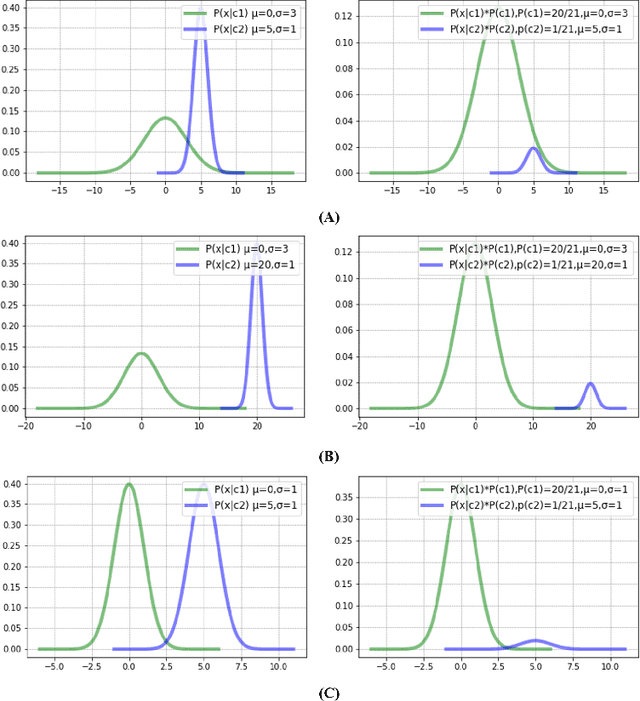
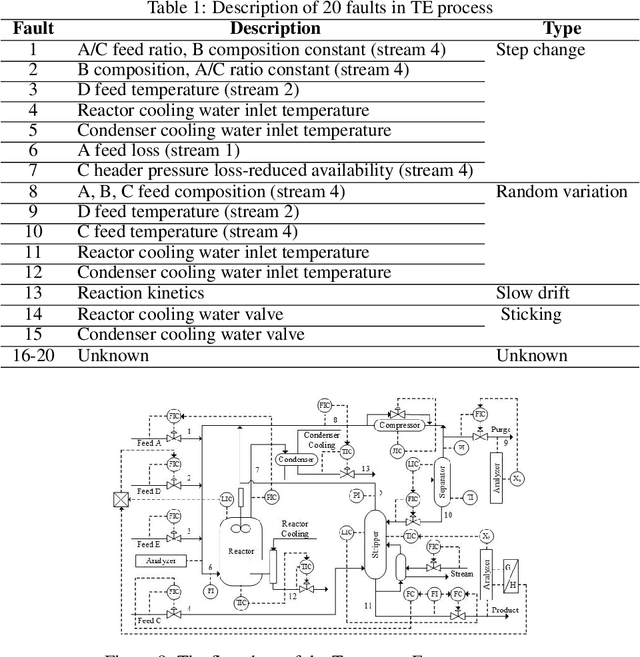
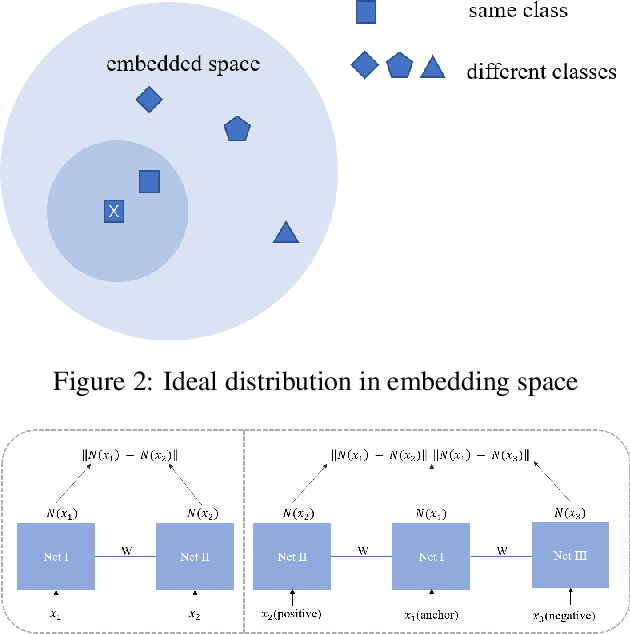

Abstract:Intelligent diagnosis method based on data-driven and deep learning is an attractive and meaningful field in recent years. However, in practical application scenarios, the imbalance of time-series fault is an urgent problem to be solved. This paper proposes a novel deep metric learning model, where imbalanced fault data and a quadruplet data pair design manner are considered. Based on such data pair, a quadruplet loss function which takes into account the inter-class distance and the intra-class data distribution are proposed. This quadruplet loss pays special attention to imbalanced sample pair. The reasonable combination of quadruplet loss and softmax loss function can reduce the impact of imbalance. Experiment results on two open-source datasets show that the proposed method can effectively and robustly improve the performance of imbalanced fault diagnosis.
 Add to Chrome
Add to Chrome Add to Firefox
Add to Firefox Add to Edge
Add to Edge